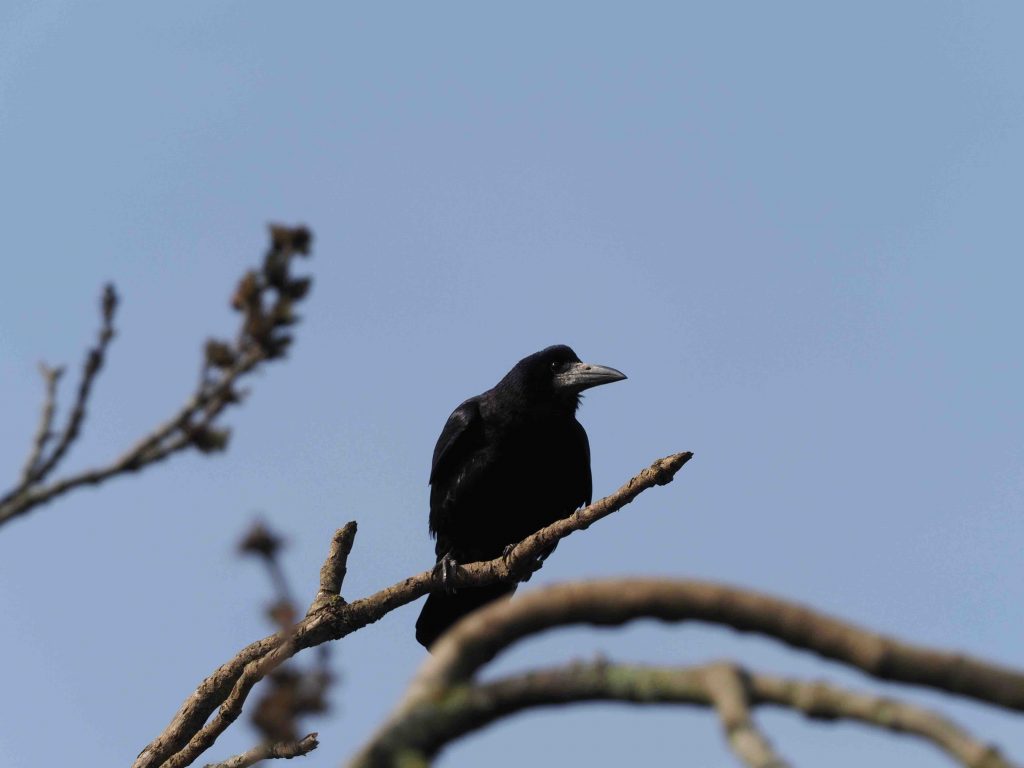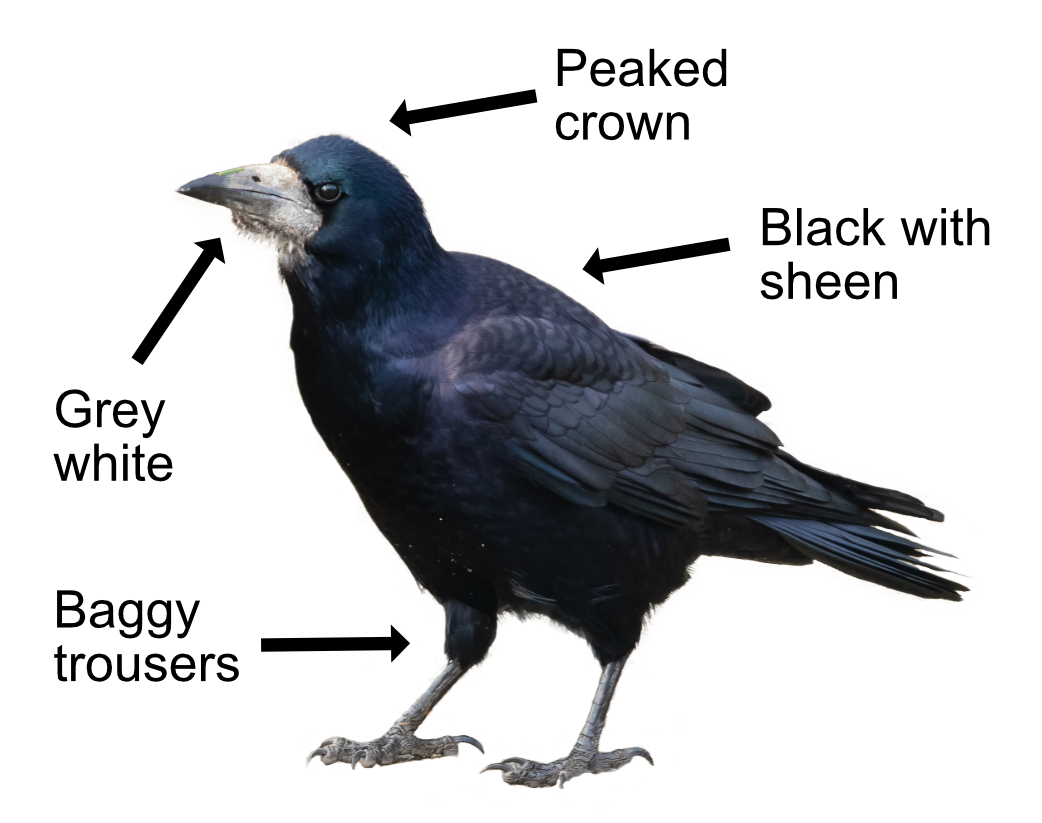
Rooks always look a bit mean, like the Ebenezer Scrooge of birds. You can just see them in fingerless gloves, stingily sharing out any food. A group of Rooks is called a parliament which clinches it. Like other crows, they are intelligent, with complex behavioural traits and an ability to solve simple problems like double-entry book-keeping.
Slightly smaller than a Carrion Crow, the Rook has an all-black plumage with an iridescent sheen when seen up close. The key identifying feature is the grey-white skin at the base of its long, pointed beak, as if he was too much of a skinflint to pay for an all black beak like the Carrion Crow's. The Rook has a 'peaked' crown that is more noticeable when they are agitated and a 'baggy trouser' look to the feathers around its legs. Rooks are very sociable birds and are rarely seen on their own (hence the old adage, "One be crow, two be rooks"). In winter, they feed and roost in large flocks, often together with Jackdaws. In flight, their wing tips are 'fingered' and the base of the wing narrows where it joins the body. The tail is wedge-shaped. Their flight tends to be direct and purposeful.
Rooks have a raucous "caw" or "kaah" call and it is usually spoken in singles (unlike a Carrion Crow which calls in threes and fours - think one 'R' in Rook and three 'Rs' in Carrion Crow). Rooks are as vocal as they are social, living in large rookeries of tens, sometimes hundreds of nests at the top of tall trees. The largest known rookery in Aberdeenshire contained over 2000 nests!

Rooks will eat almost anything, including worms, grain, nuts and insects, small mammals, birds (especially eggs and nestlings) and carrion. Foraging mostly takes place on the ground, with the birds striding or hopping about and probing the soil with their powerful beaks. In more urban areas, they will eat human food scraps from rubbish dumps and off the streets, usually in the early hours or at dusk when it is relatively quiet. They will peck open garbage sacks when out scavenging to find anything they can for free. Rooks have even been trained to pick up litter at a theme park in France (but wanted to be paid for it).
Male and female Rooks pair-bond for life and the pairs stay together within the flocks. They normally build their nests in February or March, but may start as early as January. The male selects the nest site and begins building before the female joins in. Nests are built high in the trees of a rookery and made of twigs and branches held together with mud and tufts of grass and lined with moss and leaves. Twigs are broken off trees or pinched from nearby nests, whichever is cheapest.
Typically, 2-5 eggs are laid, hatching after 16 days. The youngsters will stay in the nest for just over a month until they can fly. They continue to be fed by both parents for 6 weeks. Rooks can gather food for their young and store it in a special pouch under their bill so nobody can steal it.
There are 1.2m pairs of Rooks in Britain and the number is increasing as they are no longer persecuted by farmers (who now know that the insects the Rooks feed on are harmful to their crops). The northern Rook population migrates south in winter. In North Scotland, Rooks leave the uplands because it is too cold to stay there without wearing a kilt, which costs too much. The Rook's main requirement for living accommodation is tall trees, so they can be found just about anywhere except built-up, treeless city areas. The oldest known Rook lived to be 20 years old.
Their Latin name is 'corvus frugilegus' where 'corvus' means 'raven', and 'frugilegus' means 'fruit-gathering'. It is derived from 'frux' or 'frugis', meaning 'fruit', and 'legere', meaning 'to pick'. The English-language common name 'Rook' is ultimately derived from the bird's harsh call (if you say it in a funny way, with an outrageous country accent).